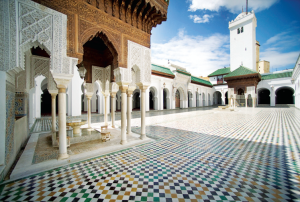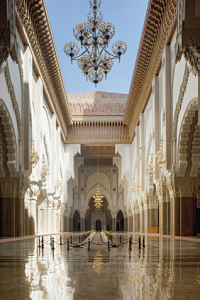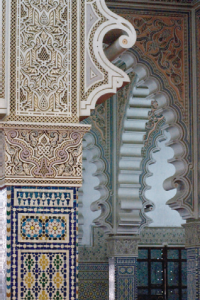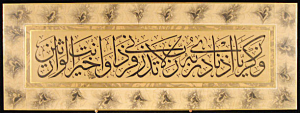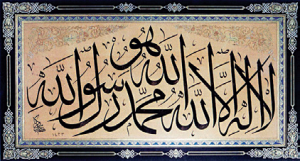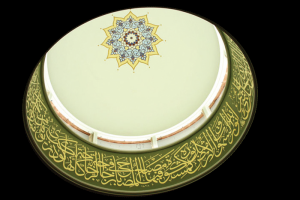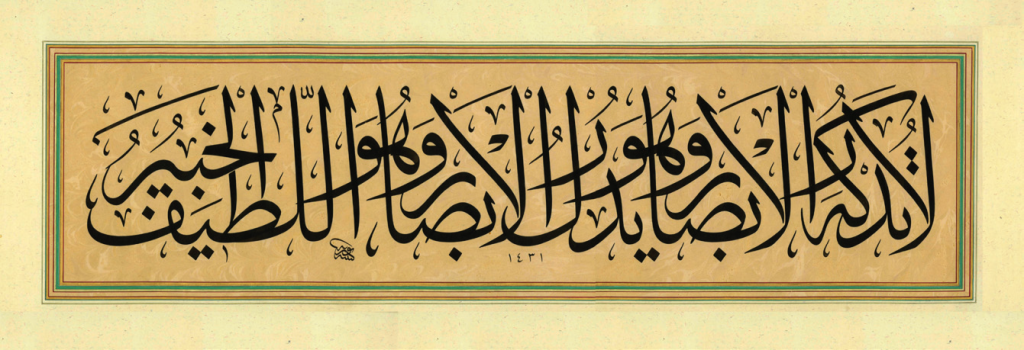Artists
Peter Gould, Australia
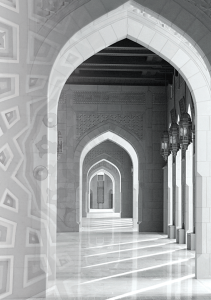
Photo taken by Peter Gould. Sultan Qaboos Grand Mosque – Oman 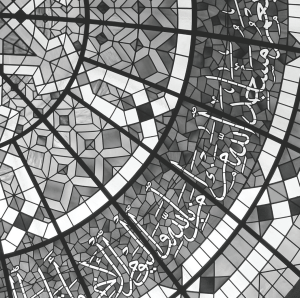
Islamic art and calligraphy, Bahrain
Sydney-born designer and artist Peter Gould has passion for contemporary graphic design, art, photography and the rich visual & spiritual traditions of Islam. His travels and studies throughout the Muslim world have inspired a unique cultural fusion that is reactive to a world of misunderstanding. Peter’s work has reached many audiences locally and abroad through exhibitions and collaborations with other artists.
Peter Sanders, UK
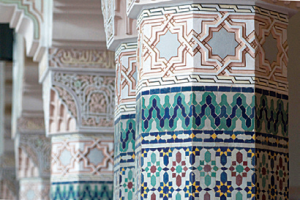
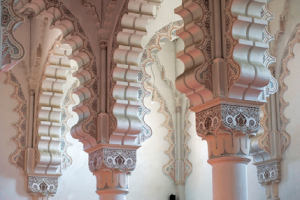
Peter Sanders is a British professional photographer who started his career in the mid 1960s. He built up a photographic archive of more than quarter million photographs from all over the world. His first book “In the Shade of the Tree” gives a wonderful insight into the diversity of the Muslim cultures around the world.
Sanders was selected by the Moroccan government to photograph and document the most important mosques and Islamic Architecture in Morocco.
Hassan Çelebi, Turkey
He is one of the most famous Islamic calligraphers in the world. Since he started teaching Islamic calligraphy in 1976, he gave “ijazah” (diploma in Islamic calligraphy) to more than 40 students from all over the world. He produced unique calligraphy pieces for renowned Islamic historical places and mosques all over the world. Examples are: Prophet Muhammad Mosque and Quba Mosque in Al-Madinah, Saudi Arabia, the Blue Mosque in Istanbul, Fatih Mosque in Pforzheim, Germany, Jum’ah Mosque in Johannesburg, South Africa, Almati Jum’ah Mosque in Kazakhstan and the Islamic Medical Centre in Kuwait.

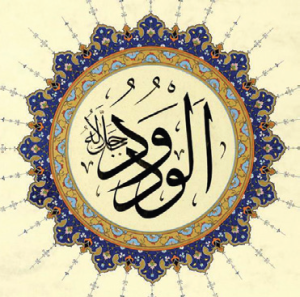
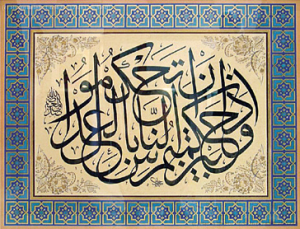
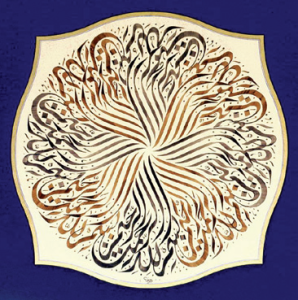
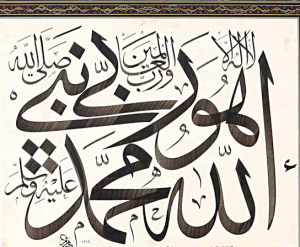
Mohamed Zakariya, USA
Mr. Zakariya is an American calligrapher who is considered the preeminent ambassador of the art of Islamic calligraphy in America. He learned Arabic and Islamic calligraphy when he was 19 in Morocco, Spain and England. He is the first American who earned two licenses in Islamic calligraphy form Turkey. He is also known for his design of the “Eid Greetings” U.S. postage stamp (Eid is an Islamic celebration). He concentrates primarily on classical Arabic and Ottoman Turkish calligraphy.
Nuria Garcia Masip, Spain
She is a professional calligrapher from Ibiza, Spain. After receiving her literature degree from The George Washington University, U.S.A., she studied Islamic arts in Morocco, then moved to Istanbul where she received her diploma in Islamic calligraphy in 2007. She currently pursues her calligraphic career through exhibitions, competitions, and workshops, moving between the United States, Morocco, Turkey, Europe, South Africa and the Middle East. Her works revive classical texts through aesthetically arresting presentation.
Salva Rasool, India
Salva holds a degree of applied art from Mumbai 1985. She incorporates an element of harmony in each genre she creates by keeping the balance between the original Arabic text and her modern contemporary artwork. She is known for creatively incorporating unconventional materials like terracotta, ceramics, pottery, glass and leather in her works.

The Quran, Chapter 1
This piece shows the main chapter in the Quran which Muslims recite in their daily prayers. It is called “Al Fatiha” i.e. the opener.
Celina Cebula, Poland
Graduated from Pedagogical University in Cracow and specialized in decorative art and artistic education. With her distinctive talent to mix calligraphy with painting she was able to reflect new meanings in her artistic designs.

The word Muhammad, The Messenger of God in Arabic mirrored over a colorful background 
“Unless you show mercy to others, Allah will not be merciful to you”. 
“Who does not thank people does not thank God”.
Haji Noor Deen, China
Born in 1963 in Shangdong province, China. He is one of the most renowned calligraphers who created a unique link between Chinese and Arabic calligraphy.

Nobuko Sagawa, Japan
She is one of the most renowned Japanese certified masters of Arabic calligraphy. She studied fine arts in Japan and became interested in the Arabic calligraphy. Mrs. Sagawa developed a style of “collaboration” among combinations of Japanese scripts (kana), Chinese characters (kanji) and Arabic letters. Her talent in mastering the “Thuluth” and “Kufi” Arabic fonts enabled her to generate creative calligraphic designs.

Farid Al-Ali, Kuwait
He is the director of Kuwait Center of Islamic Art and one of the most well-known artists in the Middle East for his resourceful designs and inventive art. In 2005 he released “Muhammadeyat”, a collection of 500 artwork designs generated from the word “Muhammad” in Arabic (please see below). The 500 designs are split into 11 groups (soft, square, hexagonal, octagonal, etc). Moreover, Mr. Al-Ali did a similar collection to “Muhammadeyat”, but derived from the word “Allah”.
Mohammed Mandi, U.A.E.
With his unique experience and creative designs, he was nominated to design the Arabic calligraphy on the banknote and passports of U.A.E. and many other countries. In addition, he was nominated to supervise calligraphic designs in Shaikh Zayed Grand Mosque in Abu Dhabi, U.A.E. and many other mosques in the world.

An artistic design of the word “Muhammad” based on Arabic script (separate letters). It is the main component of the piece designed by Mr. Mandi which reflects transparent harmony between the artistic designs of the word “MUHAMMAD” in Arabic and English scripts.
Achmat Soni, South Africa
He is the founder of the South African Foundation of Islamic Art. In his works he succeeded in creating elements of harmony between the Arabic calligraphy and the African culture. He used Ndebele art which is an indigenous art form practiced by the African Ndebele tribe. It is characterized by its vibrant colors and geometric shapes.
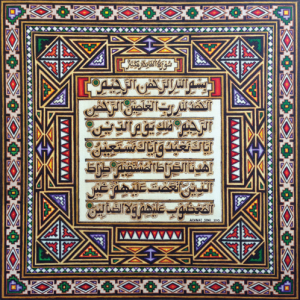
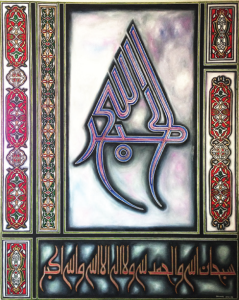
A combination of traditional arabesque pattern and modern design fused into one. Arabic letters are extended in a way that looks like the ivory of elephants.
